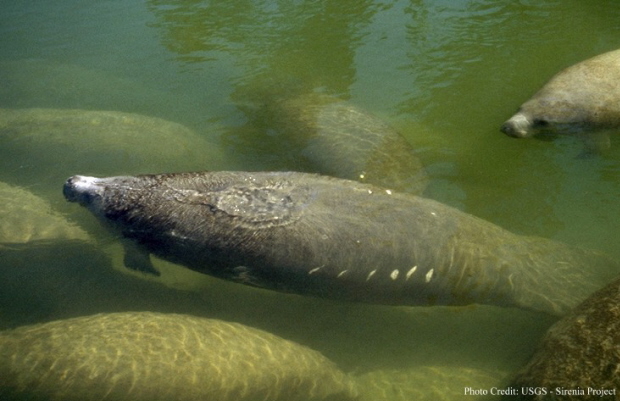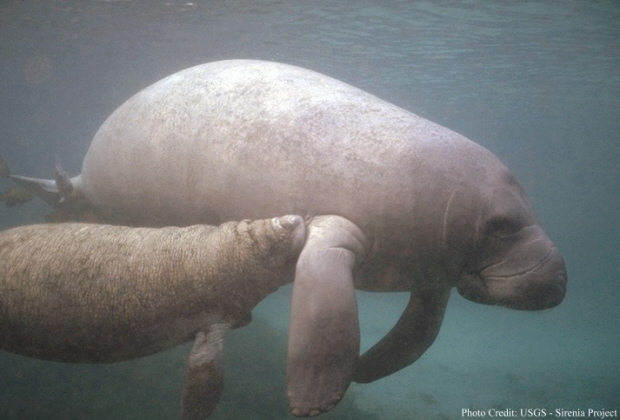|
The West Indian manatees have no particular
breeding season, but most births seem to occur in spring and early in
the summer. They reach breeding maturity between the ages of 3 to 10
years. Specific areas for mating are not required for West
Indian Manatees.
Although during birth they seek out shallow waters.
 Females have an estrous period of
about two weeks at this time they are constantly followed by a large
herd of males. Mating herds can involve up to 20 or
more males. These males escort the female for about three weeks.
There are periods of frequent and forceful jostling and forceful contact
among the individuals. Females apparently mate with multiple males
during this two week period. Females have an estrous period of
about two weeks at this time they are constantly followed by a large
herd of males. Mating herds can involve up to 20 or
more males. These males escort the female for about three weeks.
There are periods of frequent and forceful jostling and forceful contact
among the individuals. Females apparently mate with multiple males
during this two week period.
Females mate with more than one male, and
give birth to single calf after a gestation period of 360-390 days.
Twins occur once in a while but not very often. A typical calf weighs
roughly 60 pounds and about four feet long.
 The
only long-term bond between the West Indian Manatee is that of a mother and her calf.
Mothers communicate with faint squeaks and grunts to her calf. Born with
teeth, calves begin eating vegetation with a few weeks. They nurse
underwater for about three minutes at a time from a nipple located behind
their mothers forelimb. The milk glands have no storage sacs,
so calves feed frequently for short intervals. The calves remain
alongside of their mothers for one to two years. Adoption of an orphaned
calf or nursing of multiple calves is very rare among the West
Indian Manatee. The
only long-term bond between the West Indian Manatee is that of a mother and her calf.
Mothers communicate with faint squeaks and grunts to her calf. Born with
teeth, calves begin eating vegetation with a few weeks. They nurse
underwater for about three minutes at a time from a nipple located behind
their mothers forelimb. The milk glands have no storage sacs,
so calves feed frequently for short intervals. The calves remain
alongside of their mothers for one to two years. Adoption of an orphaned
calf or nursing of multiple calves is very rare among the West
Indian Manatee.
|
